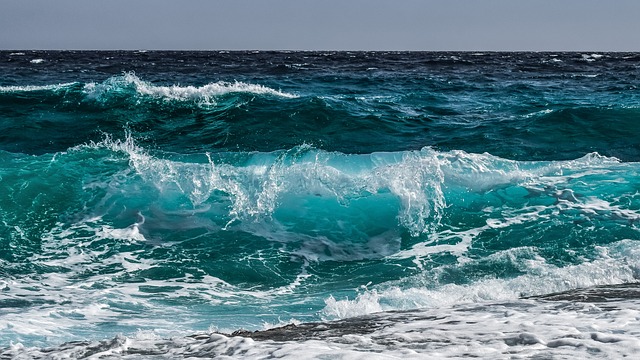
Ocean thermal energy conversion (OTEC) is a process capable to generate electricity using the temperature differential between the ocean’s warm surface water and the cooler water at its depths.
The proposed coastal power plant will utilize ocean thermal energy conversion to provide clean electricity to the island’s residents.
Ocean thermal energy conversion works on the basis of thermodynamic heat transfer. OTEC is particularly viable in tropical regions where surface water can be 20°C warmer than is the deep ocean. Although various designs have been used experimentally, the process begins with warm surface water evaporating a working fluid (typically ammonia), which then powers a turbine to generate electricity. Cold deep ocean water then condenses the vapor back into a liquid and the process is repeated indefinitely. Ammonia is a good working fluid, because it boils at −33°C at atmospheric pressure but can be liquified under high pressure. Some OTEC systems use seawater itself as the working fluid and may also desalinate that seawater. Therefore, tropical small island states with limited access to fresh water but warm seas might especially benefit from such technology. OTEC is renewable, does not produce greenhouse gas emissions during operation, and has the potential to provide consistent energy. At its current state of development, however, OTEC is quite inefficient. To make OTEC operate efficiently, some experts say, it must be implemented in a plant many times larger than the experimental ones developed to date. Such a plant would require huge investments that, so far, no one is willing to make.
Přeměna tepelné energie mořské vody (OTEC) je proces, při kterém se využívá rozdíl teplot teplé povrchové vody oceánu a chladnější vody v jeho hloubkách k výrobě elektřiny.
Navrhovaná pobřežní elektrárna bude využívat přeměnu tepelné energie mořské vody k zajištění čisté elektřiny pro obyvatele ostrova.
Přeměna tepelné energie mořské vody funguje na základě termodynamického přenosu tepla. OTEC je obzvláště životaschopná v tropických oblastech, kde může být povrchová voda o 20 °C teplejší než v hlubinách oceánu. Ačkoli byly experimentálně použity různé konstrukce, proces začíná odpařováním teplé povrchové vody z pracovní kapaliny (obvykle čpavku), která pak pohání turbínu a vyrábí elektřinu. Studená hlubokomořská voda pak kondenzuje páru zpět na kapalinu a proces se opakuje donekonečna. Čpavek je vhodnou pracovní kapalinou, protože při atmosférickém tlaku vře při -33 °C, ale pod vysokým tlakem může být zkapalněn. Některé systémy OTEC používají jako pracovní kapalinu samotnou mořskou vodu a mohou ji také odsolovat. Proto by z této technologie mohly těžit zejména malé tropické ostrovní státy s omezeným přístupem ke sladké vodě, ale s teplým mořem. Technologie OTEC je obnovitelná, během provozu neprodukuje emise skleníkových plynů a má potenciál poskytovat stálou energii. V současném stavu vývoje je však OTEC poměrně neefektivní. Někteří odborníci uvádějí, že aby OTEC fungoval efektivně, musí být realizován v elektrárně mnohonásobně větší, než jsou dosud vyvinuté experimentální elektrárny. Taková elektrárna by vyžadovala obrovské investice, které zatím nikdo není ochoten vynaložit.
English Editorial Services’ mission is to assist international businesses and organizations of all sizes to communicate clearly, correctly, and persuasively with their business partners and target audiences.
Simply subscribe to receive our Business Term of the Day at no charge to your inbox each business day, with explanation in English and Czech.



English Editorial Services’ mission is to assist international businesses and organizations of all sizes to communicate clearly, correctly, and persuasively with their business partners and target audiences.
Simply subscribe to receive our Business Term of the Day at no charge to your inbox each business day, with explanation in English and Czech.

